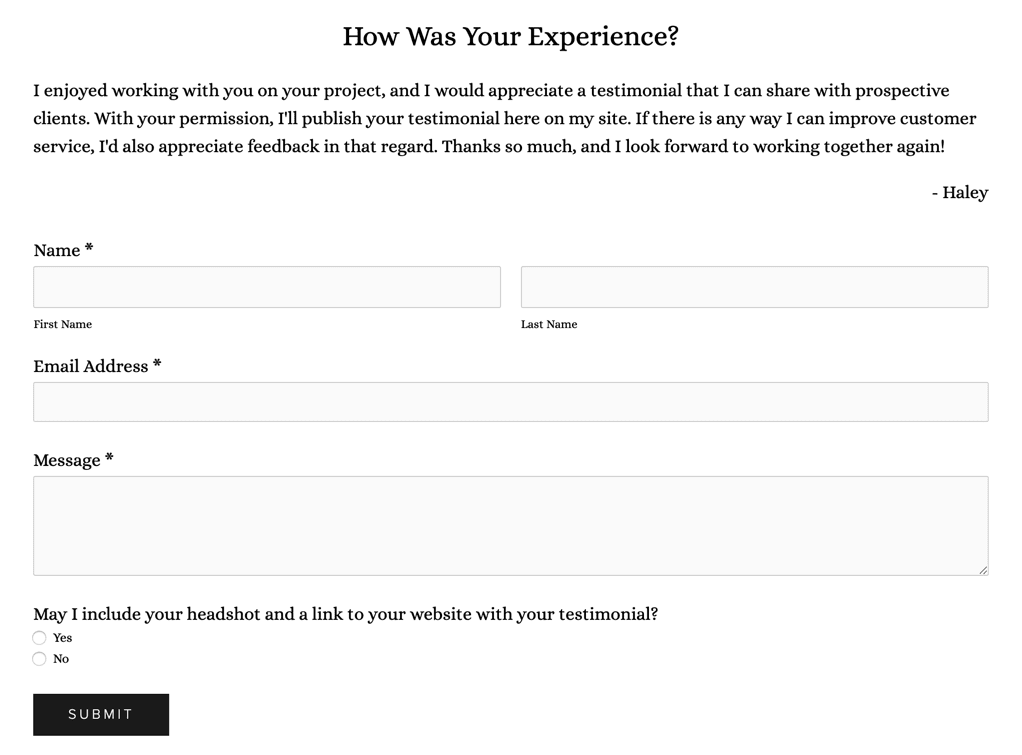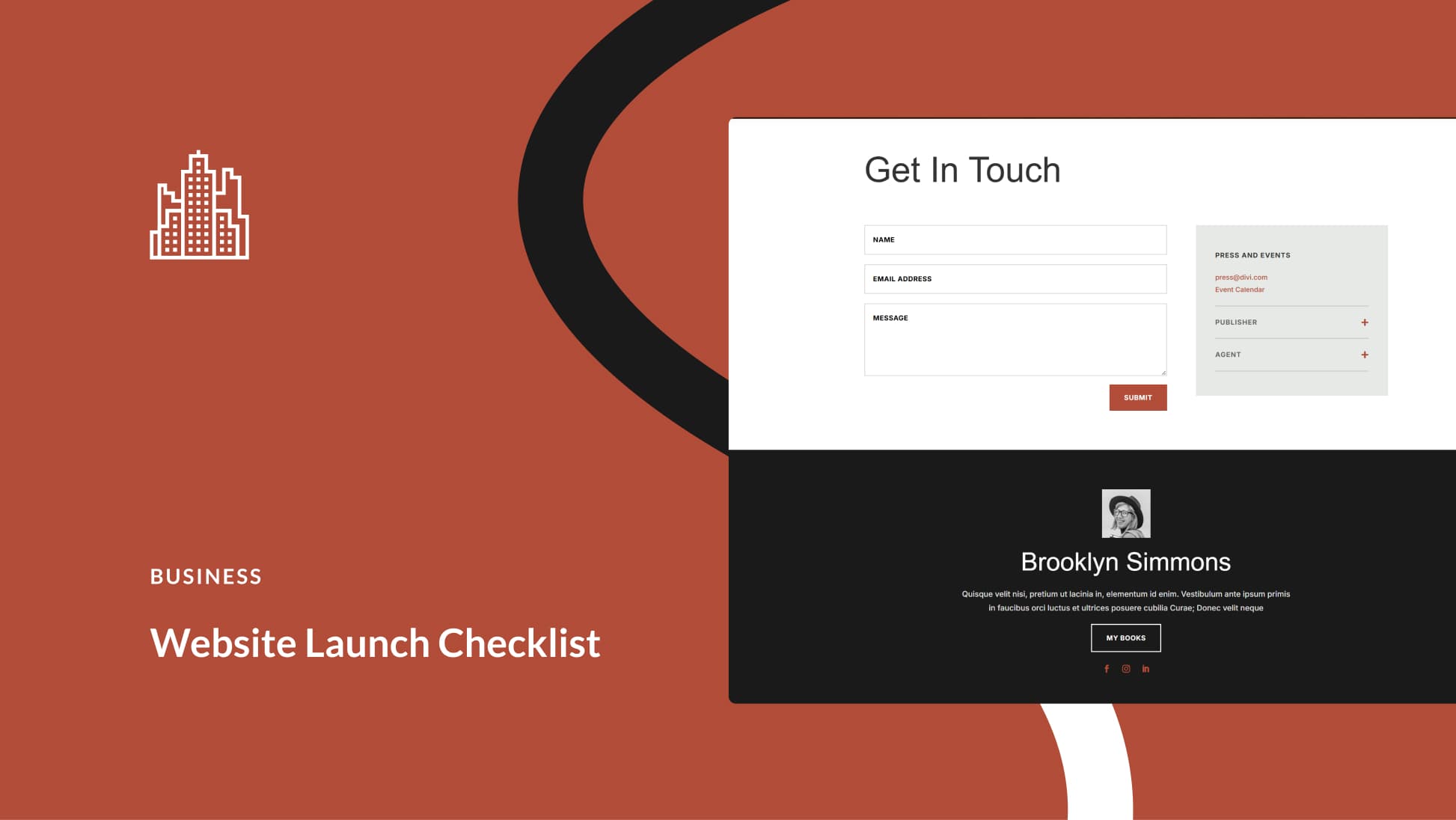Getting testimonials from happy customers and clients is an important part of building and scaling your business. Positive testimonials build brand awareness and social proof, and they’re a crucial marketing tool for business owners. Asking for testimonials is a fairly simple process, and it’s easy to implement as part of your customer journey and client acquisition.
There are several different ways you can ask for testimonials, and a number of places to display them once you have them. Depending on the type and nature of your business, you can request and display customer testimonials on your website, via social media (Facebook, LinkedIn), on Google, and more.
Before we can start gathering and displaying testimonials, we need to consider when and how to ask. The answers vary, so let’s look at a few possibilities for asking for testimonials.
When to Ask for Testimonials from Clients and Customers
The nature of your product or service dictates when you should ask your clients and customers for a testimonial. Here are three common times when it’s particularly easy to make the ask:
- Immediately after services are rendered. If your service depends primarily on customer service and one-on-one, human interaction in the exchange, don’t be afraid to ask for a testimonial right away.
- At the end of a project. As you’re wrapping up a project, go ahead and ask your client to leave feedback. Their experience will still be fresh, and you’ll be more likely to get a response from them than if you wait before asking for testimonials.
- Fifteen to 30 days after a product purchase. You might sell a product or course that requires a little time to use before results are obvious. If that’s the case, give your customer a bit of time to try it out, then make the ask.
Asking for testimonials is a highly individualized process. The timing really depends on the nature of your relationship with the customer, the level of interaction, and how long it takes for them to assess how your product or service works for them. In some instances, you’ll need to wait longer than others before you request feedback.
How to Ask for Testimonials
Just like timing, asking for testimonials varies in terms of method. Depending on products or services, you can choose to ask for testimonials personally or automate a system for requesting feedback. There are pros and cons to each method, but both are effective.
Asking for Testimonials Personally
Asking for testimonials personally means you’ll need to set aside some time to reach out to your clients and have additional personal interaction with them once your work is complete. This isn’t necessarily a bad thing. The more positive touchpoints you have with a client, the more likely you are to get repeat business or strong referrals from them.
Once you’ve completed your project, don’t wait to ask. Go ahead and let your client know you’ve enjoyed working with them and would love to get their feedback on how the project went. Let them know you’d like to display the testimonial on your website or social media. Alternatively, point them toward the platform you would like them to use (if you want them to leave a review on Google, Facebook, or LinkedIn, for example).
Here are a few ways you can ask a client directly for a testimonial:
- Ask via email as you’re wrapping up your project
- Have a quick wrap-up phone call, during which time you make your ask
- Hop on a videoconference to close things out and ask to record their thoughts
- Send them a form or survey they can fill out about their experience
Additionally, consider leaving them a review or a recommendation on a site such as LinkedIn. You can let them know you’ve left feedback for them and request their feedback as well.
Automating Your Testimonial Process
Asking for testimonials via automation takes some time and steps out of your process. This method of requesting feedback is great if you sell a product or service that takes a little time to show results.
Consider including a feedback form or survey in your email automation, scheduled to send in a specific time frame once the transaction is completed. For example, if you sell a social media training course, you might want to follow up with your customers in 30 days’ time to see how the course has worked to get results.
Don’t Be Afraid to Follow Up
If your client or customer has agreed to give you a testimonial but hasn’t yet done it, it doesn’t hurt to follow up and politely remind them about leaving feedback. Try to give them everything they need up front to make the process as quick and easy as possible so it doesn’t take them much time.
It never hurts to offer incentives for your clients and customers to leave feedback. For example, you could offer a small gift card or a discount on your next project. You can also offer referral discounts for each client they refer to you.
When Not to Ask for Feedback
Avoid asking for feedback if your client hasn’t had enough time to get a feel for your product and the results it produces. For example, you wouldn’t ask a customer who purchased your skincare product for feedback only a week into using the product.
Additionally, refrain from asking for testimonials if the project didn’t go smoothly or end well. While honest and constructive feedback is important in a private, one-on-one feedback session, you may not want critical feedback displayed on your website or social media.
In general, do not ask for a testimonial if you or your client had to terminate the project early. It’s best to keep requests for public feedback limited to positive experiences as much as possible.
How to Collect Customer Testimonials
There are many tools you can use when asking for testimonials. Here are a few options:
- Via email, through a form or survey such as Google Forms or SurveyMonkey
- Request a short video testimonial
- Direct them to your social media platform of choice, such as Facebook or LinkedIn
- Ask that they leave a review on Google, Yelp, or a similar platform
I have an unlinked web page on my site where I direct clients to fill out a testimonial request form. The form includes a permission request to display their headshot alongside the testimonial, which I collect and put on my site. Here’s what the form looks like:

Where to Display Testimonials
Once you’ve collected your testimonials, display them proudly in as many places online as you can. Display them on your website, social media, and in other relevant marketing materials so your prospective clients and customers can see others’ positive experiences. Be sure to repurpose testimonials wherever possible by creating social posts, Stories, using them in email marketing, and more.
We have a number of Divi plugins available to help you prominently display testimonials on your WordPress website. Here are a few:
- Free motion testimonial layout
- Hover over client logos to view testimonials
- or the Built-in Divi testimonial module
Additionally, here’s a guide on styling Divi’s testimonial module for your site.
- And here’s our list of best testimonial plugins for WordPress
As we live in a digital age, testimonials don’t only have to be written. They can be displayed in other forms of media as well, such as photos, graphics, audio, and video. When customers or people create content for a brand, this media is called user-generated content (UGC). The content can then be repurposed to be used on your website, in newsletters, and anywhere else both online and offline. UGC works as amazing social proof, and hence, they make fantastic testimonials! Instagram is a good example of a platform that makes it easy to gather user-generated content for your business. Consider adding an Instagram grid plugin to your website to display all the wonderful things that your customers are saying about your brand.
Wrapping Up
Asking for testimonials is as varied and nuanced as it is straightforward. The bottom line is that your method of asking for and displaying testimonials depends entirely on the nature of your business, your interactions with clients, and your prospects’ needs.
What’s your favorite way to ask for testimonials? Let us know in the comments.
Featured Image via Irina Strelnikova / shutterstock.com









I collect testimonials right after finishing a project by just asking my clients. It works quite well and I already got a lot of positive and honest comments on my webdesign works. Ususally I let them choose between posting a review on Facebook or Google MyBusiness… or they can send me their comments via email and I publish those in the testimonials section of my website. I love the idea of automating the testimonial process. I will definitely give it a shot. Thanks for this post!
Very cool – you’re welcome! 🙂
I personally only give paid testimonials anymore unless the experience was exceptional. The more you pay the better the testimonial.
It’s taken me a while to build the confidence to ask for reviews as I make handmade items and have always feared people would tell me they are rubbish but when I launched my new site built with Divi I installed a reviews plug in that emails my customers 5 days after they place an order. I’ve had lots of lovely feedback about my products and my website!
This is great to hear! Congrats!
That’s awesome! Glad to hear it!
I had no issue reaching out to ask for testimonials, my issue came when they asked me what I wanted them to say or to write something out for them they could edit. That made me uncomfortable. I thought some of that might be covered in the HOW part this blog.
That would make me uncomfortable, too. At that point, will your feedback still be your own? Very good point–thanks for your thoughts.